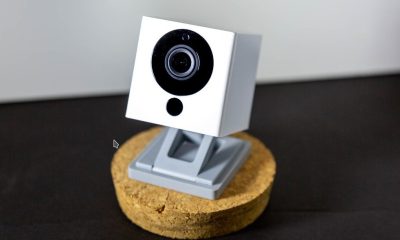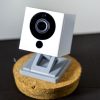Gadget
What Are Art Lenses And What Do They Do?
If you’re planning to get a new lens for your camera and Sigma is one of the lens manufacturers you’ve been considering, you may have heard of Sigma’s Art line or something referred to as Art Lenses.
This might occur if you’re considering purchasing lenses with extraordinary focal plane sharpness and simply excellent optical performance, which guarantees stunning image quality.
If this phrase has left you perplexed and you’ve been wondering what an art lens actually is, you’ve come to the right spot. All of those lenses share some characteristics, which are all detailed in the section below.
Art Lenses Versus Regular Lenses
The phrase “art lens” might imply a number of different things, but most important that are prime lenses design to provide you with the widest possible aperture range and superb sharpness. Is this accurate, and if so, were these Sigma art lenses create with that use in mind?
What are the advantages of power cycle wyze cameras from the Sigma Art series specifically if some may claim that you may get sharp shots even with cameras from other series? And finally, how distinct from a standard lens is a Sigma art lens really?
What Are Art Lenses?

The Sigma art lenses from their Art line are typically mean when lenses are referre to as “art lenses. Sigma manufactures a unique category of lens called a “Art lens” that is primarily utilize for photos with a more artistic feel.
The Art series lenses are wide-aperture, high-quality optics and construction lenses; nonetheless, they are not specifically telephoto lenses. The performance of the Contemporary lenses has been google ads campaign because they are on the cheaper end and have a very wide zoom range.
Sport lenses are faster telephoto lenses with better optical performance that are develop specifically for sports photography.
No matter what you require, you will be able to use it with a variety of camera bodies, so whether you own a Sony, Canon, Nikon, Leica, Pentax, or Panasonic, the Sigma art lenses will work with it (click on links for examples).
The most professional of the three is the Sigma Art range, which is frequently view as a more affordable alternative to more premium options like Canon L, Canon EF, or Sony G Master.
Some individuals will even go so far as to claim that the Sigma Art lenses are superior and produce more high-quality images. The photographs you take with these lenses are generally design to look like works of art.
Designed To Look Like Works Of Art
The Sigma Art lenses offer a maximum aperture range of f/1.4 to f/2.8, which implies that the colors are extremely bright and have the sharpest details. The fact that the aperture is wide open significantly contributes to the stunning booked.
Low-dispersion elements are another tiktok technique they use when making these lenses, and they also give the minimizing of any potential aberration a priority.
All of these advantages have been confirm by numerous Sigma Art lens users, including myself. The Sigma Art lenses do, however, have some shortcomings and drawbacks, much like any other lenses.
The focusing tends to be miss a lot with these Art lens selections, which is the biggest recurring issue. However, if you use a manual focus ring, this won’t be a problem because manual focusing is very effective.
The biggest advantage of these lenses would be that they are more expensive but more professional looking.
What Are Regular Lenses?
A normal lens in photography and filmmaking reproduces a field of view that seems “natural” to a human viewer, according to technical definitions.
On the other side, depth compression and expansion with shorter or longer focal lengths produce significant, and occasionally unappealing, distortion.
As in real life, there are some issues with this term in photography as well. When we claim something is typical, we don’t always know exactly what that means.
You would need to locate anything that prints a picture of a scene that was photograph at arm’s length in order to determine whether a lens is normal or not.
A lens can be regard as normal if the perspective you see in the image matches how something is in reality.
The focal length this sort of lens uses is approximately 39.6mm, and a lens thought of as a normal lens often has an angle of view that is close to one radian (57.296 degrees).
However, a normal lens’ focal length might vary based on its intended application.
When people refer to a normal lens, they typically mean one with a focal length between 35mm and 50mm, which is also referred to as a standard lens.
These lenses are identical to the human eye because of their exact focal length because it is very similar to how we perceive.
Speaking of utilization, given the similarities between regular lenses and the human eye, professionals typically use them to create effects that appear more grounded and natural.
In most cases, these lenses are either equal to the diagonal length of the sensor in a digital camera or, if it’s not a digital camera, equivalent to the film format.
How Do Art Lenses Differ From Regular Lenses?

A Sigma Art lens primarily provides you with sharp images and razor-sharp details. Taken with a specialty lens. Images produced in this way are naturally of a little higher quality, but in addition to that, they also appear to have more artistic expression and finer details.
They are more inexpensive than some other options and do have outstanding performance and a small design. However, there are some situations where wide-angle lenses are required, such as in architecture photography, low-light photography, landscape photography, and even portrait photography.
Apart from being the name of Sigma’s brand, the term “Art lens” means little else and refers specifically to Sigma lenses rather than any other kind of lens.
There are variations of this made by other studio photography makers, so you can even get Canon or Nikon lenses with the identical features.
Where, When, And How To Choose Camera Lenses Why?
It takes time and experience to become an expert at selecting the right lenses for various conditions, but it’s crucial for taking the greatest photos. But after some time, it comes naturally.
Based on my own experience, I’ll try to assist you determine which camera lens to use in this article and reduce the amount of time it takes. I’ll also discuss the kinds of lenses that are worthwhile investing in.
In photography, there is a general principle that, for the most part, has persisted across time. Wide angle lenses capture expansive landscapes and dramatic skies, ideal for landscape photography. Standard lenses suit street scenes with their normal field of view. Sports and portraits benefit from medium to long telephoto lenses, enhancing focus and perspective. However, there’s more.
By following this rule as it stands, you won’t exactly be doing anything unlawful, but occasionally, as with other rules, they can be bent or broken to advantageous ends. Additionally, it’s frequently a good idea to push your creativity and abilities and try photographing scenes with other lenses to see what they can achieve. It strikes me as both energizing and instructive. Let’s talk about
Let’s Talk About Camera Shot
Here is a photograph I shot of a total stranger whom I almost passed by on the South Bank of London. Because it was the only lens I had with me, I had to choose one that was quite wide. But even with a lens so wide, like the 21mm, a spectacular portrait may be created. That incorporates more of the surroundings, which may enhance the photo by adding more context. In this instance, a hip and artistic part of London frames the woman, who is clearly at home there based on the photo. As is customary for portraits, a typical longer lens would obviously separate the subject from the background.
A telephoto-shot landscape is another illustration. In portrait photography, it can be flattering to use a long lens’s perspective-compressing qualities. A wide lens, however, would have reduced the size of the home and, in my opinion, damaged the image by including more of the rain clouds.
Avoid Choosing Too Many Lenses.
Prime lenses, which are compact, lightweight, and precise, are quite popular with me. It results in uncertainty, which can force the photographer to repeatedly framing and reframing an image. The finance departments, by which time the subject has grown weary and bored and the spontaneity has been completely sapped from the situation.

















